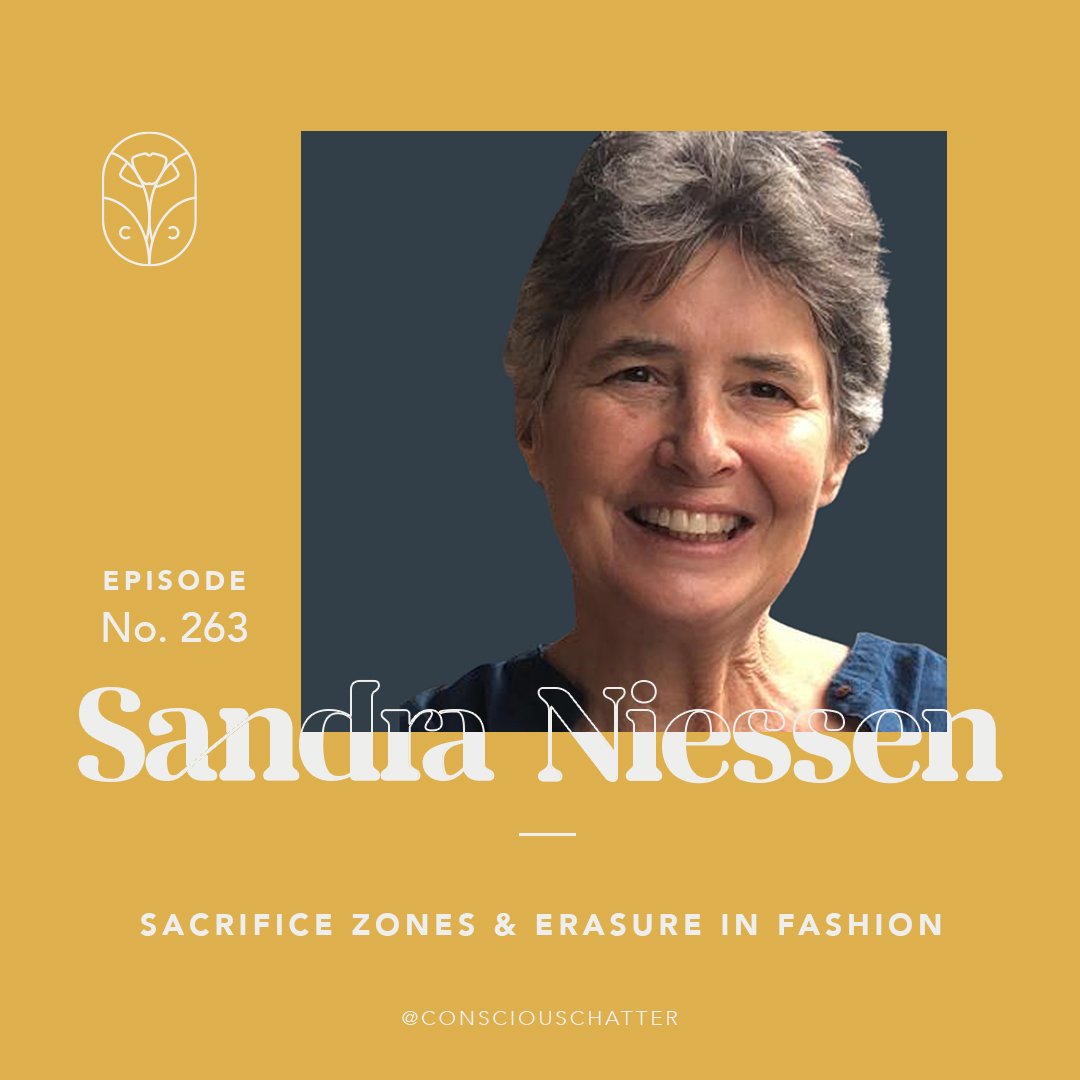*Sacrifice zones* & the complex ways that fashion was built on and produces erasure
In episode 263, Kestrel welcomes Dr. Sandra Niessen, a cultural anthropologist, fashion scholar and activist, to the show. In 2020, Sandra published a notable article titled: “Fashion, its Sacrifice Zone and Sustainability”, which we explore on the show. She currently works closely with Fashion Act Now.
“The loss of fashion or the degrowth in fashion — people think of that as a closing down of our fashion system or our clothing system. And I think of it as an incredible enrichment — the opportunity to throw open the windows and throw open the doors, and be creative in ways we’ve never thought of before and that are written out there in the world in Indigenous clothing systems and we’ve ignored all the time.”
-Sandra
I first discovered this week’s guest, through a YouTube interview she did with Extinction Rebellion. It was focused on “Fashion & Degrowth, and exploring the link between decolonization and sustainability in fashion”.
In it, our guest said – “Try to imagine colonialism without fashion”.
This really struck me – of course, we have deconstructed and broken down several layers of how fashion’s foundation is colonial, but this quote in particular really struck me, because I feel like the industry is rarely contextualized this way.
It’s rarely even contextualized from a historical lens as far as the systems of power that have led to the construction of the current fashion system. Like what we worked to unpack through The Root series with Dominique Drakeford.
But I guess what I’m getting at here is that suddenly, OTHERING was written across the sky in flashing lights for me.
Imagine the ways that dress or clothing or FASHION have been used as tools to OTHER people – to indicate who has power and who doesn’t have power. To show who is welcome and who is not. To perpetuate power dynamics.
As this week’s guest highlights, this idea of OTHERING is another way of saying ERASURE.
Erasure is what fashion was built on and what it continues to thrive off of – and according to this week’s guest, it could be the achilles heel of fashion if we truly want to change it.
Quotes & links from the conversation:
Fashion Act Now, activist group Sandra works with
“Fashion, its Sacrifice Zone, and Sustainability”, article by Sandra
“We know that it’s the people — the people who live on the land, who are the maintainers of the land, they look after the land, they understand the land, they’re living in close association with it, sustainably with the land. And when we sacrifice those people along with the land, we’re losing that knowledge, that Indigenous wisdom that we could really benefit from in this world of crisis that we’re currently in where we’re trying so desperately to find sustainability and yet at the same time, we’re erasing the peoples that could help us learn about sustainability.” (21:34) -Sandra
“Fashion is turning us (the consumer) into a sacrifice zone, it’s turning the cognitive aspects of other cultures into a sacrifice zone, so that we all become somehow entranced and begin to follow this strange mentality that’s associated with fashion. So, in that sense, fashion is producing sacrifice zones as well as being fundamentally based on sacrifice zones in its production systems.” (23:53) -Sandra
Podcast with Trabian Shorters on “Asset Framing” that Kestrel mentions
“Fashion teaches us to make ourselves hollow and to just be this superficial display. Whereas, the satisfaction comes from the inverse, and the inverse is what’s erased.” (37:20) -Sandra
“The only way fashion can separate from growth is to stop being fashion.” (40:14) -Sandra
Less Is More (2020), book by Jason Hickel
Earth Logic (2019), book by Kate Fletcher and Mathilda Tham (free to download) — Sandra mentioned how it offers a paradigm in which the earth (carrying capacity) is central
Two useful resources Sandra recommends, regarding alternative economic arrangements: The Wellbeing Economy Alliance & David Bollier’s website
“Regenerative Fashion, there can be no other”, article by Sandra
“RANGSA NI TONUN” - The Sacred Batak Weaving Tradition — film by Javanese artist MJA Nashir, that Sandra helped produce






